Showing 201–210 of 1165 results
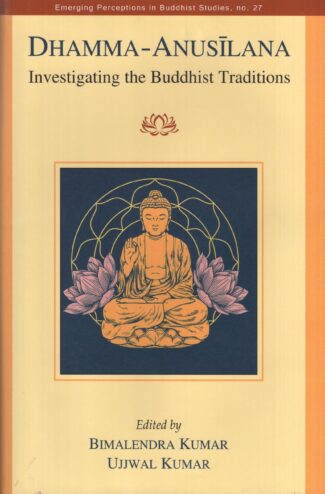
This book is an anthology of seventeen cerebral articles from well-known Buddhist scholars associated with major universities across the globe deliberating many a topic associated with Buddhist religion and its philosophies as part of our constant striving to understand the fundamental nature of what the Buddha wanted us to realize.
There have been serious attempts to understand the Buddha and his teachings since the inception of Buddhism some 2,600 years ago. All through the history of Buddhism, scholars were constantly striving to understand the fundamental nature of what the Buddha wanted us to realize. This book is an anthology of seventeen cerebral articles from well-known Buddhist scholars associated with major universities across the globe. In four parts – Meditation; Personality and Position; Dharmakirti and Persons; and Principles, History and Grammar – it highlights some pertinent topics associated with Buddhism and its legacy.
Part I discusses the diverse dimensions of meditation, dedicating itself to the kiriya (action) aspects of Buddhism. Part II is an attempt to delineate and study the major branches of Buddhism. Part III deliberates on the contributions of Dharmakirti and Rahula Sankrtyayana to the Buddhist philosophy along with the concept manusa-panatipata and how the revelation of reality of human experience by analysis helps a person to achieve wisdom in the light of Majjhima Nikaya Anathapindikovadasutta. Part IV has papers on different philosophical and applied concepts of Buddhism.
This volume thus should benefit one in understanding many an aspect of Buddhism vis-à-vis its enormous corpus of literature and teachings. It should highly benefit the students of Buddhism and for those who are keen to fathom deep into the myriad topics of Buddhist philosophy and teachings.
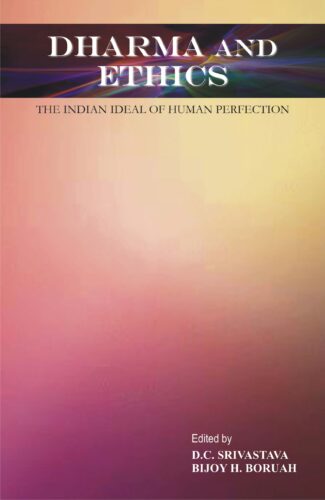
The volume consists of fourteen essays written by scholars of diverse disciplinary discourses, such as Philosophy, Political Science, Literature, Economics and Classical Studies (Sanskrit) and presented to the serious reader as an Indian picture of the virtuous life set against the larger background of virtues that are woven into the fabric of Western civilization.
Set against the background of the contemporary popularity of virtue ethics in the West, this book projects a unified picture of Indian Virtue Ethics by highlighting two interrelated purposes. First, it canvasses the point that Indian ethics, both in its classical and its modern shapes, is basically founded upon the cultivation of those attitudes that conduce to the realization of a virtuous self. Second, it draws out the various facets of virtues, traditional and modern, which bear a specifically Indian character. With these two aspects combined into a complex whole, this work manages to present itself as a coherent set of ethical ideas with a distinctively Indian identity.
The book consists of fourteen essays written by scholars belonging to diverse disciplinary discourses: Philosophy, Political Science, Literature, Economics and Classical studies (Sanskrit). As such, it presents to the serious reader a multi-perspectival Indian image of what it is like to lead a virtuous life and to aspire for human perfection.
Central to the Indian ideal of human perfection in the Indian tradition is the place of dharma in the overall scheme of life. While this centrality of dharma is recognized in the essays included in this book, the virtue-ethical interpretation of this central concept attempted in these essays is marked by a broader understanding of the concept adapted to the imaginative elucidation of the idea of a dharmic or virtuous life.
It is strongly believed that this book will be an eye-opener to scholars in Philosophy, Religion and Cultural Studies. It promises to set a new standard of ethico-philosophical scholarship by expanding the horizon of virtue ethics as it appears in present Western moral philosophy.
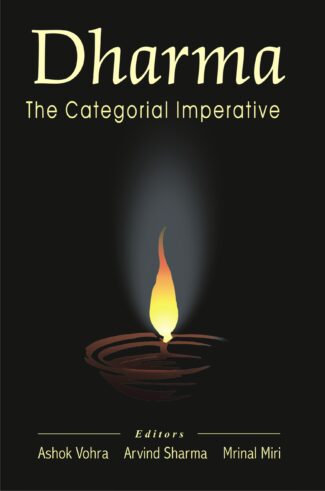
This book presents an in-depth study of the concept of dharma and acknowledges that Indian reality encompasses the elements of religion and dharma. It explores an alternative understanding of Indian civilization, independent of Western presuppositions as well as some contemporary issues relating to women and the dilemmas faced by the Indian diaspora.
Each stable culture and major civilization of the world consists of a distinct material base and a distinct ideational structure and has an inherent mechanism of striking its own equilibrium between the two. In the Indian tradition dharma is the balancing force. Religion and ideology are literally treated as synonymous with the Sanskrit word dharma. But dharma differs from religion in not being exclusive, and from ideology in possessing a transcendental dimension. The papers in this volume acknowledge that neither the word religion nor dharma can be discarded while looking at the Indian reality. They address themselves to the question: To what extent does the continued use of the concept of religion in the Indian context reflect reality, and to what extent does it distort or misrepresent its dhàrmic reality? Given India’s historical and the present existential situation these papers explore the question: Is an alterative understanding of Indian civilization possible, independent of Western presuppositions? The articles in the book present an in-depth study of the concept of dharma and its relation to the other purusharthas artha, kama and moksha, as well as with society, science, religion, Ayurveda and secularism. Relying mainly on the Vedas, epics, Manusmriti and the writings of Plato, Vivekananda, Gandhi et al., these papers explore some contemporary issues relating to women (stri-dharma) and the dilemmas faced by the Indian diaspora, especially in the UK and the US. These discussions have an appeal for a general reader as well as for scholars of Philosophy, Religion, Women’s Studies, Modern India and Sociology.
This book presents a proper meaning of the Ramcharitmanas chaupai, Dhola gamvara sudra pasu nari , ye sab tadana ke adhikari using the actual meaning of the word, tadana, in Avadhi language, and by delving into the deep philosophical references of the Pancabhutas, ether, air, fire, water, and earth of the Samkhya and
Vaishesika darshanas, as intended by Goswami Tulsidas.

This volume explores the various complex conceptual dimensions of sound: ranging from its mystical and traditionally meta-physical to its present-day developments, from its perceptions in indigenous musical theory to its futuristic applications.
Dhvani (Sound/Nada) is a profound experience that envelopes us from birth to death. Yet it is not easily fathomed. Its description by an accoustic engineer is very different from that of a musician, a linguist, a city planner, or a neurologist. The IGNCA (Indira Gandhi National Centre for the Arts), New Delhi, organized a 2-day International Seminar: 24-25 October 1994, not only to understand the experiential, cross-cultural perceptions of sound, or not just to discourse about its definitional subtleties as are encountered in the ancient texts of the East and the West; but also to bring together its perceptions in tradition, modern accoustics, and even in the ongoing environmental studies. In todays living conditions, the Dhvani-theme is specially crucial for sound has become a major pollutant both in terms of resonances and accoustics. Assembled in this volume are the presentations of the IGNCA seminar, exploring the various complex conceptual dimensions of sound: ranging from its mystical and traditionally metaphysical to its present-day developments, from its perceptions in indigenous musical theory to its futuristic applications. With focus around five thematic areas of the seminar: (a) Sound as the Source of Creation and Sources of Sound, (b) Sound and the Senses, (c) Sound and Space, (d) Sound and Time, and (e) Symbols of Sound and Sonic Designs, the authors open up the possibilities of interaction among different disciplines involved in the study of dhvani-phenomenon.
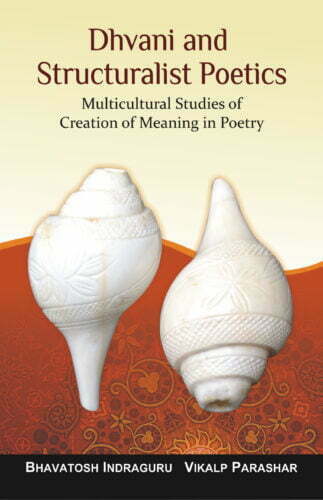
The book is an in-depth study of dhavni, the well established Indian critical system and the Western structural poetics. It also examines the independent universalisation and necessity to explicate words, letters and syllables for the sake of meaning formation.
Dhvani and structuralist poetics emerge as the two primary theoretical frameworks in which the reality of inquisition and propagation of comprehensibility and creativity of the artistry could be well-conceived, exposed and implied. In each of the two systems, the maturity of conception and universality of expression of the content, context and the medium are quite remarkable.
The book is an in-depth study of dhvani, that is, the Indian critical system developed around the eighth century ce, and structuralist poetics the Western critical premise, commencing with Ferdinand de Saussure’s Course in General Linguistics that substantiate an adequate methodology to understand the formation of categories, contents, constructs and mediums as a necessary corollary to an analytical procedure that would bring about transformation. It examines the independent universalisation of sabda, pada, varna, vakya, bhava, vibhava, anubhava, sthayibhava, sancaribhava, alambana and uddipana for the sake of an absolute artistic formation, especially as propounded by Anadavardhana, the progenitor of dhvani system. It then delves deep into the structuralist poetics, following Saussure, Barthes, Jakobson and others, that focuses on the need and necessity to explicate words, letters, syllables and even otherwise an experience so as to create a valid notation, out of each of these, for the sake of totality in the meaning formation.
The study has immense significance owing to the fact that it promotes proper understanding and enjoyment of literature. Moreover, the fact is that Indian and the Western scholarships have not paid much attention to the subject discussed herein. The volume, therefore, will be of an immense interest to scholars and students of poetics and literature in general.
ध्यान-योग ध्यान के सैद्धान्तिक, व्यावहारिक व वैज्ञानिक पहलुओं को प्रकाशित करने वाली एक अद्भुत व अनमोल पुस्तक है। ध्यान की अवधारणा, योग शास्त्रें में ध्यान का स्वरूप, ध्यान का आध्यात्मिक महत्त्व, ध्यान की तैयारी एवं ध्यान द्वारा शरीर व मन पर पड़ने वाले प्रभाव का वैज्ञानिक विवेचन-विश्लेषण आदि बिन्दुओं को इस पुस्तक में बहुत ही सहजता, सरलता व सुन्दरता के साथ प्रस्तुत किया गया है। नियमित रूप से ध्यान करने हेतु विविध प्रकार की ध्यान की विधियाँ व अभ्यास एवं ध्यान की वैज्ञानिकता इस पुस्तक कोे ध्यान पर लिखी गई अन्य पुस्तकों से न सिर्फ अलग करती है बल्कि इसकी गुणवत्ता में अभिवृद्धि करने के साथ-साथ इसकी सुन्दरता में चार चाँद भी लगाती है। आज भौतिकवादी और भोगवादी जीवन-दृष्टि, भौतिकता की अन्धी दौड़ व चकाचौंध ने मनुष्य के स्वास्थ्य, सुख-चैन व शान्ति को छीन लिया है। आज सम्पूर्ण मानव समाज को यौगिक जीवन-दृष्टि, आध्यात्मिक जीवन-दृष्टि की परम आवश्यकता है। इस दृष्टि से यह पुस्तक और भी अधिक उपयोगी, महत्त्वपूर्ण एवं प्रासंगिक है। विकृत जीवन-शैली के कारण नानाविध शारीरिक, मानसिक व मनोकायिक रोगों से पीड़ित, परेशान लोगों के लिए तो यह पुस्तक एक अमृत-रसायन व संजीवनी है। क्योंकि यह पुस्तक स्वस्थ जीवन-शैली, आध्यात्मिक जीवन-दृष्टि एवं नियमित रूप से ध्यान के अभ्यास द्वारा स्वस्थ, सुन्दर व सुखी जीवन जीने की राह दिखाती है। निराशा, अवसाद, तनाव, कुण्ठा, चिन्ता, उद्विग्नता आदि मानसिक समस्याओं के समाधान हेतु यह एक रामबाण औषधि है। जहाँ यह पुस्तक एक ओर योग-साधकों, अध्यात्म-प्रेमियों, आत्मानुभूति, ब्रह्मानुभूति व मोक्ष के इच्छुक मुमुक्षुओं, व जिज्ञासुओं के लिए मार्गदर्शिका और पथ-प्रदर्शिका है तो वहीं दूसरी ओर शैक्षणिक जगत् से जुड़े विद्यार्थियों, शोधार्थियों व प्राध्यापकों के लिए एक प्रामाणिक टेक्स्ट बुक भी है, ग्रन्थ भी है। जो इस पुस्तक को पढ़कर अपने जीवन में नित्य ध्यान का अभ्यास करेंगे उनका चित् अपूर्व आनन्द, उल्लास और उमंग से भर जाएगा। वे एक नूतन जीवन-दृष्टि, आध्यात्मिक जीवन-दृष्टि पाकर परम आनन्द और परम सौन्दर्य के एक अज्ञात आयाम में उड़ान भरने लगेंगे।

In this book, Nataraja Guru, a disciple of the Great Narayana Guru, explains the dialectical methodology and applies it to understand the relationaship between man and woman, Proto-language and Meta-language and romance and tragedy in Eastern and Western literature.
Dialectics is the implicit method of Upanishadic literature. It is also used as a critique for yielding a superior unitive understanding in works like the Bhagavad Gita and the Yoga-Vasishistha. In the West, dialectical methodology originated around the fifth century bce, and has been used in varying ways by classical thinkers, later Christian theologians, and modern philosophers like Kant, Fichte, Hegel, Karl Marx and Friedrich Engels. The writings of Nataraja Guru provide an integrated vision of the Eastern and Western traditions of dialectics. As such, he offers an unitive understanding of philosophy by way of a more comprehensive methodology of dialectics.
In the book, Nataraja Guru explains the basics of dialectical methodology, and applies it towards a superior understanding of the relation between man and woman, between proto-language and meta-language (bearing reference to Indian iconography), and between romance and tragedy as found in literature. He also applies dialectics in order to study social problems, but in a way that varies from Hegel, Marx and Engels. He further reveals the significance of the value system found in small, primitive communities, and upholds the eternal values of coexistence, unity and collective security. In particular, this volume provides a window for examining Nataraja Gurus overall position as a philosopher and his unitive teachings in general. In this regard it will be valuable for philosophers and scholars as well as the general reader.
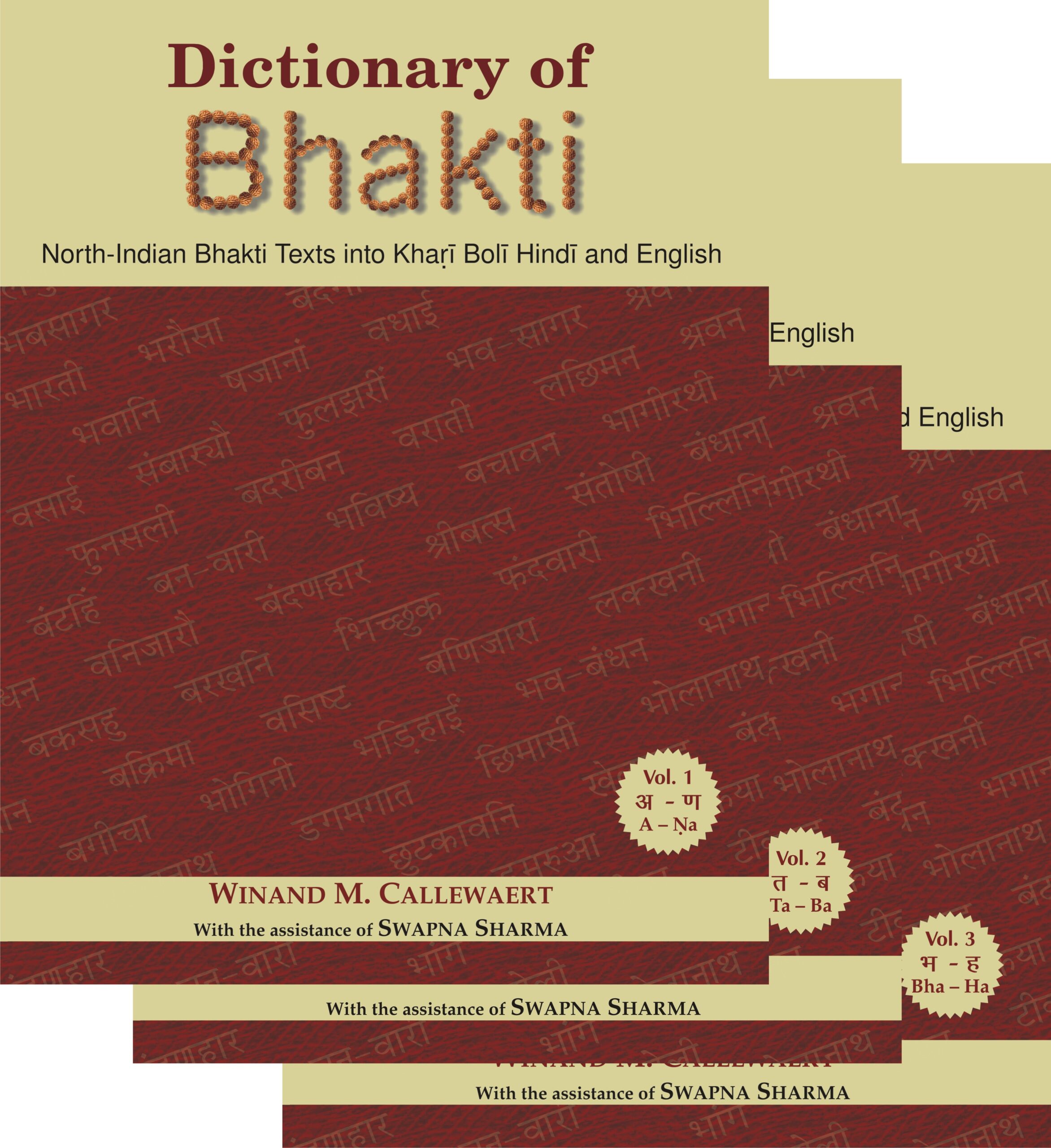
Bhakti is the tool prescribed in the present Kali age to reach the Supreme. Over the last seven centuries mystic reformers preached a monotheistic religion, without caste distinction and wandering singers spread their message in the vernacular languages. This dictionary will enable a wider readership to access and understand the beautiful texts available in bhakti literature.
After ce 1000 an important change took place on the religious scene in India. With the arrival of the Muslims and the establishment of Muslim governments in Delhi and elsewhere, Hinduism was confronted with a powerful religious tradition that was not only supported by military strength but was also endowed with a strong tradition of mysticism. Along with this double challenge, India was invaded by a language, Persian, that became the official language of the imperial court. From ce 1300 onwards a remarkable phenomenon changed the religious history of India. Popular mystic reformers appeared, reacting vehemently against both the Brahmanical ritualism and the corruption in Islamic practices. They preached a monotheistic religion, without caste distinction, stressing very personal devotion and giving their message in the vernacular languages, not in Sanskrit.
The language of this bhakti literature is a mixed medium that, until now, has not been described in detailed grammars and dictionaries, as was the case with Sanskrit. The vocabulary of this medium was borrowed, not only from Sanskrit and Persian but also from local idioms and dialects, and wandering singers adopted many terms and expressions as they travelled from one region to another. Consequently, each fresh edition in this field requires new grammars and glossaries.
The challenge of research in this area is the fact that this literature is only accessible in manuscripts and little has been critically edited. Secondly, the language in which these hymns were sung has been studied only imperfectly, although a lot of progress has been made in the last twenty years. It is important that a wider readership should be able to access and understand the texts available, and it is here that we should situate the usefulness of the Bhakti HindiEnglish Dictionary.
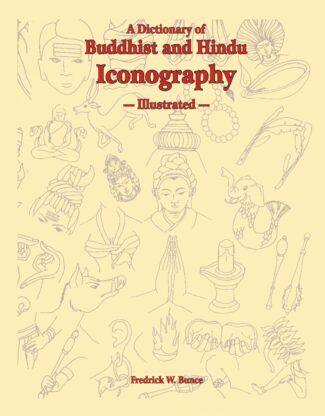
This Dictionary attempts to reveal the divine paradoxes of Buddhist-Hindu iconography by even interpreting the nuances of their iconic language. It explains, vividly, thousands of iconic representations (visual, conceptual symbols, images, objects, concepts, rites).
Man has, from times immemorial, exhibited a striking predilection for symbols. Which, through written words, drawings, sculptures or other visual/iconographic representations, seem to have shaped much of mankinds culture. From the simplest, yet eloquent, drawings on the walls of the prehistoric caves, through the sophistication of Egyptian imagery, the sculptural embroidered wealth of a Khajuraho, or the convoluted elegance of a Mannerist painting all interweave iconographic imagery so inextricably into their very core that, without its visual/didactic richness, these would be a mere shell, a hollow vanity! Veritably, our cultural scenograph will lose much of its aesthetic charm and meaning, once it is bereft of iconography. Over the centuries, Buddhisn and Hinduism (Brahmanical) have built up pantheon after pantheon, with a bewildering number of divinities, in varying forms and emanations and, significantly, with myriad iconographic attributes. Which, for both their definable precision and complex multi-interpretationality, not merely seem paradoxical, but may baffle even the specialists and the initiated as well. Here is just the Dictionary trying, for the first time, to help you see into the divine paradoxesof Buddhist-and-Hindu iconography and, simultaneously, interpret the very nuances of their iconic language. Painstakingly compiled by a distinguished scholar of Oriental/Buddhist Art, it is a Buddhist-and-Hindu Iconologia par excellence, spelling out vividly thousands of iconic representations, which these two of the worlds oldest, sustained faiths have left for all times to come. In its monumental effort to explain/interpret Buddhist-and-Hindu visual/conceptual symbols, images, objects, concepts and rites, the Dictionary extends the definition of iconography to embrace numerous peripheral/other terms, which either have immediate relevance to iconographic principles or are hard to dispense with in visualizing the true import of different icons. Dr. Bunces work has, at its base, his own first-hand observation of various temples in India, Nepal and several Southeast Asian countries; besides a number of authentic sources: both illustrated and verbal. Flawlessly illustrated: from cover to cover, it includes a compellingly readable introduction, an easy-to-understand Users Guide, extensive bibliographic references, and two well-planned lists to facilitate location of its each headword, each entry. Which all reinforce the Dictionarys indispensability to the specialists and the non-specialists who have often to grope for the essentials of Buddhist/Hindu iconographic complexities.
| There are no products |